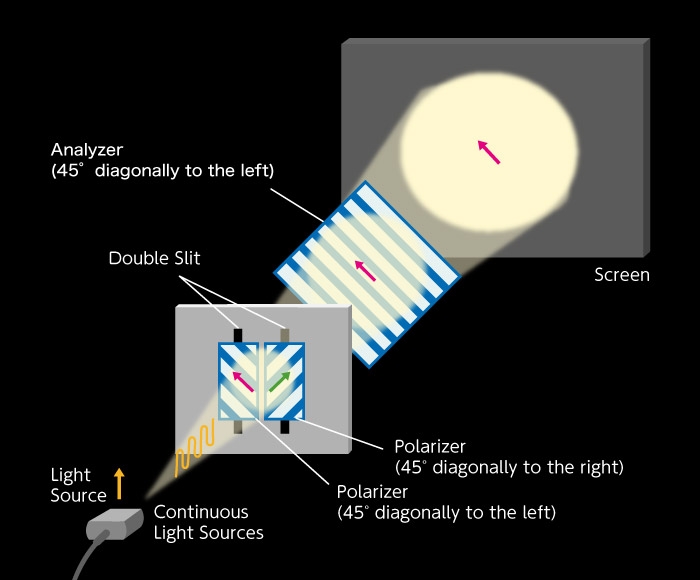Detecting a single photon, the elementary particle of light, tantalizes the imagination and has profound implications across numerous fields, from quantum mechanics and astrophysics to telecommunications and biomolecular imaging. The art of photon detection operates at the intersection of cutting-edge technology and foundational physics, making it an increasingly pivotal undertaking in modern science. This article explores the complexities involved in capturing a single photon and the potential transformations that such capabilities promise to bring.
To commence this exploration, it is crucial to understand the fundamental essence of a photon. At its core, a photon is depicted as a quantized packet of electromagnetic radiation, exhibiting wave-particle duality. Remarkably, photons possess no rest mass, which enables them to traverse vast expanses of space, traveling at the speed of light. Yet, this very characteristic complicates detection ventures. The low energy inherent in a single photon makes it challenging to identify amidst the myriad of other electromagnetic signals, thereby necessitating sophisticated methodologies for efficient observation.
The historical backdrop of photon detection is replete with pioneering efforts, the most notable being the advent of the photoelectric effect elucidated by Albert Einstein in 1905. This phenomenon demonstrated that light could eject electrons from certain materials when illuminating them with sufficiently high-energy photons. Following this paradigm shift, the field has evolved dramatically, now encompassing an array of sophisticated detectors such as photomultiplier tubes (PMTs), avalanche photodiodes, and superconducting nanowire single-photon detectors (SNSPDs). Each technology harnesses distinct principles to sense low-light conditions and yield detectable signals.
Photomultiplier tubes epitomize early yet robust technology in photon detection. By converting incoming photons to electrons through the photoelectric effect, they amplify these electrons through a cascade of dynodes—an effect known as secondary emission. While effective, PMTs are limited by their operational range and susceptibility to high levels of background noise, thereby stymying their application in some high-sensitivity scenarios.
On the other hand, avalanche photodiodes operate through a different mechanism. These semiconductor devices exploit the principles of impact ionization. When a photon is absorbed, it promotes an electron across the band gap, and in a high electric field, the electron undergoes a cascade effect, triggering further ionization events. Avalanche photodiodes are known for their compactness but may struggle with high photon fluxes, leading to decreased detection efficiencies.
A significant advancement is found in superconducting nanowire single-photon detectors. These devices have risen to prominence due to their remarkable sensitivity, which descends to the single-photon level. By employing a thin wire of superconducting material cooled to near absolute zero, the device establishes a condition where the passage of a photon can induce a measurable disruption to the superconducting state. This rapid transition can be detected, enabling the faithful capture of individual photons even amidst competing photonic noise.
While these technologies provide invaluable tools, the art of detecting a single photon transcends mere instrumentation. The challenge lies in maximizing the signal-to-noise ratio, a critical ratio that must be manipulated meticulously. Techniques such as time-correlated single-photon counting (TCSPC) and frequency-domain measurements serve to enhance the fidelity of existing detectors, ensuring reliable identification amidst environmental perturbations.
Moreover, these advancements propagate possibilities beyond mere detection; they usher in the realm of quantum information science. Quantum key distribution, for example, relies on the principle of quantum superposition and entanglement, where single photons act as carriers of quantum information. The reliability of such systems necessitates the ability to detect single photons with unprecedented accuracy, thereby ensuring the security of quantum communication channels.
Applications extend even further into fields like molecular biology, where single-photon detection can illuminate biological processes that are otherwise elusive. Techniques such as fluorescence microscopy take advantage of single-photon sensitivity to probe the intricate web of biological interactions. By utilizing quantum dots labeled with single photons, researchers can visualize mechanisms at the molecular level, leading to insights into cellular dynamics that were previously obscured by traditional imaging limits.
The implications of successfully detecting single photons reverberate through the landscape of modern science. As the limits of photon detection are continually pushed, one anticipates transformative shifts across diverse sectors, from cryptography to biomedical imaging. The burgeoning field of optomechanics proposes yet another paradigm, paving the way for the emergence of hybrid devices that function across classical and quantum realms, capable of transferring information with an optimized bandwidth informed by single-photon detection methodologies.
As the exploration of this topic draws to a close, the intersection of theory, experimentation, and technological advancements in the realm of single-photon detection beckons further inquiry. Each photon represents not just a particle of light but a gateway to explore the intricate fabric of reality. Thus, the quest for enhanced photon detection casts its light upon the horizon of scientific discovery, urging a fervent inquiry that transcends established knowledge and continues to illuminate the path toward understanding the enigmatic nature of light.










